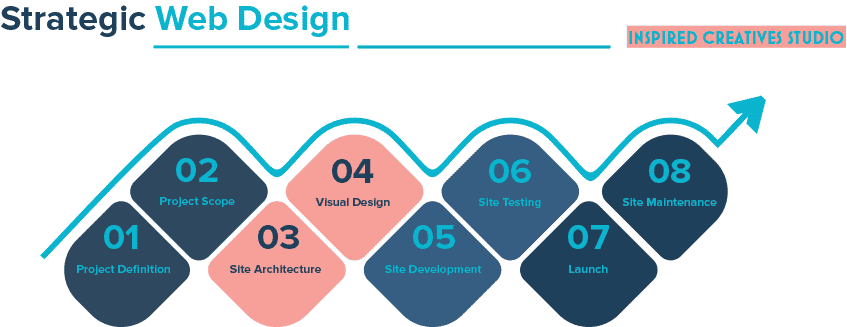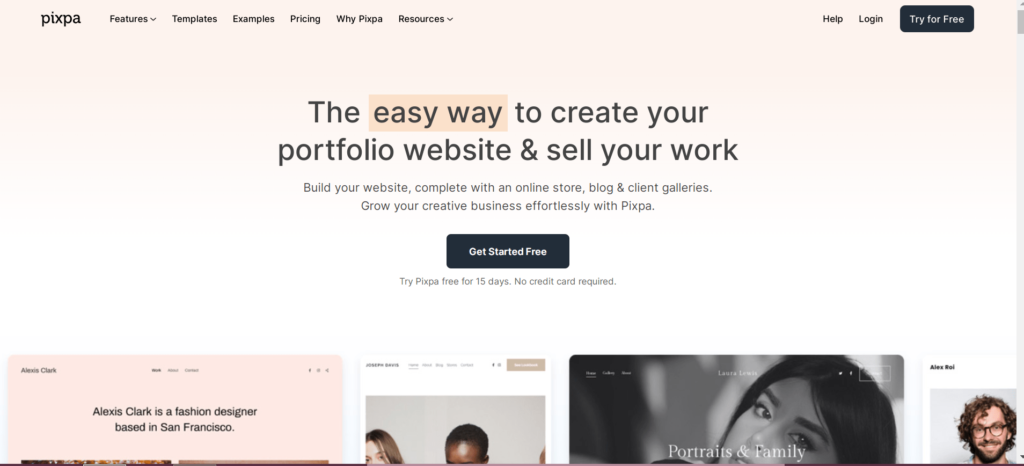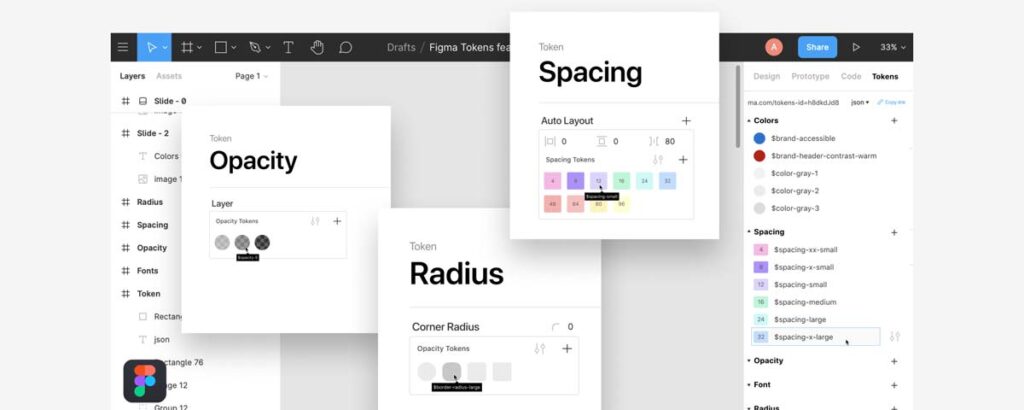Website Design: Stages, Peculiarities, and Pitfalls
An excellent interface of digital products is key to a high user satisfaction rate. Due to this fact, the design stage within the website architecture is a crucial point to success. But the process itself can be very different from project to project.
Such aspects as the business domain and the company’s concept impact the requirements for the website design. The time spent on the designing phase is highly variable, as the more sophisticated and multifunctional software is, the longer its creation takes. Therefore, it’s vital to have a good idea of what to expect from this stage.
This post discloses the process of developing the design for the website to give a clearer picture of its peculiarities and stages and help you receive a top-quality product interface.
Table of Contents
Website Design Process Inside and Out

Let’s start by diving deeper into the process of design creation. Before this, we would like to note that it’s vital to hire web developers with proven expertise in this process. A competent tech specialist knows how to cooperate with the design team. Their joint work will result in a brilliant interface with a flawless UI and client-oriented UX.
Below we’ve singled out essential steps included in the website design creation process:
Outline the plan of your project
The beginning of every project, as well as its design, is always the planning stage. The more details you provide to the chosen tech partner, the closer you are to meeting your demands.
The cooperation with the software development team starts from the initial stage. It implies negotiating the client’s requirements, project concept, and the goals that the web product should complete. Based on that information, specialists develop the relevant set of features for your business and your customers.
The initial stage efficiently prevents excessive reviews, consequent corrections, inaccuracies, and flaws in the final result. We recommend providing a thorough and precise description of the idea and your view on the output.
Market and competitors research
During this stage, you should analyse the competitors with similar web solutions and can pick certain products as samples to show them to the team of developers. Besides, you can define the “killer features” of the other products and get a clear look at what makes them demanded and valuable.
The inspiration and ideas may be applied to your project or even be modified and enhanced within the creation of your website. As the other UI/UX concepts are selected and inspected, you can build the warp of the design and implement the assembled thoughts. This can be done using a pen or pencil and paper and then recreated with the special tech instruments.
Website design mockup architecture
After finishing the rough draft, it’s high time to build the actual visualisation of the website’s design. For this, the team of designers uses sketching tools that help create the product’s mockup. Traditionally, such examples may have no colours applied as they only represent the layout of the solution’s elements and serve as a scheme for a better idea of the result.
You can imagine the future interface and all its integral elements, parts, screens, and buttons it incorporates within this stage. You should also prioritise the content that is planned to be placed there and set it in the logical order.
It would be best if you also accomplished this stage by referring to the customer behaviour. The sufficient convenience and user-friendliness will maximise the client’s experience and expand your audience.
Pay attention to the homepage

The website’s homepage is the face of your entire company and the business. Therefore, it’s significant to make it flawless, sophisticated, and intuitive in usage.
After entering the website, clients get acquainted with the goods or services through the homepage and instantly receive the primary impression. Their first thoughts impact the entire customer funnel and journey. So you should keep the main page easy to use and balance refinement and simplicity.
Let’s also discuss how to fill the website with the information correctly; the data placed above and below the fold should be the following:
- The data placed above the fold commonly incorporates the primary information for clients to be aware of. In addition, it presents the details in which the audience is commonly interested so that the users don’t have to waste time searching for answers on their own. You should also include the engaging benefits of your brand, business, or company in this part.
- A more thorough description of the offered goods or services should be located below the fold. This part should reveal more itemised specifications of what the business can ensure. To illustrate, you may add the goods’ characteristics or add the complete list of services performed by your company and their description.
- The logo is the element of primary importance, so it would be wise to place it at the top. The drop-down menu used to navigate the other screens and pages is ordinarily located on the upper part of the homepage. It should comprise sections like the company’s history, goods and services with their description, physical location, contacts, and frequently asked questions.
One recommendation is to avoid too long headings since customers are displeased with them. A proficient partner will help develop the perfect, laconic, meaningful slogan to catch the client’s eye immediately.
Apart from this, remember that the modern audience is quite fussy. Therefore, users won’t put much effort into understanding the excessively long paragraphs obscurely describing your business, so think about the precise wording.
Consider complementary elements
Experienced website designers are aware of making your product look full-fledged. Together you may add extra elements to give a polished look to your solution. The following list can suggest specific ideas:
- Animated elements. This feature substantially raises the customers’ satisfaction. Such interactions may look minor at first sight, but they can boost the brand’s credibility.
- Loading marks. They are called loaders and appear on the screen when clients navigate among the pages and wait for their loading to finish. They serve as a specific response to the users’ actions, making the website more solid.
- Advertisement. You can add it to the website in the form of a banner that accompanies the text with the appropriate offers. You may input both image/and video content in it.
- Onboarding. When visiting the website, firstly, customers may receive quick and helpful guidance on where to find the information they need, point out the placement of specific sections or provide concise instructions for the interface usage.
Pick a colour palette and fonts

Filling the wireframe with colours should be completed according to the customers’ psychology. The adequately picked palette and typography can make your website incredibly stylish and attractive, giving a signature look to your brand.
Think over each element’s colour, a determining factor for the business demand and clients’ final decision. For instance, picking red or orange as the fundament for the theme may result in customers’ unconscious irritation and fatigue. Conversely, colours like light blue and delicate pink are often chosen to increase sales and relax the audience’s eyes.
The chosen colour theme and the fonts should match the concept of your brand and the company. As for the typography, choose the fine and easily perceived type.
Examine the prototype
Considering all the details mentioned above, the designing team delivers the website’s prototype. In turn, you should thoroughly examine it and, if necessary, ask specialists to fulfil modifications.
After that, they are waiting for your acceptance to pass the result to the software engineers. They will continue the project by finishing the front-end and backend of the website and implementing all the previously defined features.
What Design Model to Choose?
Qualified web development vendors can build a row of various design types. They are selected individually, considering your target audience or the existing client base, budget, business domain, and goals. Let’s take a more detailed look at the existing design models to select the one relevant for your case:
Adaptive type
Such a design has a name that tells its tale— the website’s interface adjusts to the device it is used on. The investment in such a product is reasonable, as it allows covering the maximal number of potential users and expanding the audience. Apart from the fact that the website can be entered and used through any browser, the adaptive design detects the gadget of the visitor and displays the appropriate interface.
Responsive type

This option has certain resemblance and mutual characteristics with the previous type. Nevertheless, the main distinguishing factor is that components are not fully converted to suit the gadget with a responsive design. Some of them remain the same and are merely stretched. Depending on the brand and its industry, this type may be advantageous in some cases.
Bootstrap grid
You may apply the bootstrap grid for the more rapid process of architecting the design warp. This variant ensures a suite of instruments to create innovative and sophisticated web solutions. Many trustworthy software development companies have already started profiting from its opportunities, so we advise looking at it.
Landing page
Such websites consist of one separate page. Its primary aim is to present the products or services to the audience, generate more leads and engage them in activities like following the blog, ordering the goods or services, filling in the form to enter the course or receive the digital product, etc. The functionality of landing pages isn’t rich, as it ordinarily acts as an auxiliary tool for the primary website to expand the customer base.
Great Tools for the Irreproachable Design
Finally, we would like to introduce great instruments that are highly helpful in developing flawless web design. The sufficient knowledge and experience of the tech team in tandem with such a kit will provide the top-class outer look of your solution:
Principle
This framework allows the implementation of the most exciting trend in software design- animated elements. Its opportunities substantially cut down the time spent to create animations, making the entire project completion faster and more efficient. The convenient way to build several parts simultaneously is also the benefit offered by Principle.
Figma

Figma is an online graphical editor allowing remote cooperation for all project participants. It is widely used to make alterations in the already created design and build a prototype for the website or an application interface and negotiate the process with developers and stakeholders.
InVision
This cloud-based framework is applied to build the products’ wireframes. Furthermore, the designing team can display the results to the client and software engineers, making the gradual completion of the project visible to all parties engaged in it.
After Effects
The instrument introduced by Adobe aims to redact, modify, and correct the moving pictures and video content. As the first tool in this list, it helps designers create animated objects to achieve a more attractive UI/UX.
Sketch
The instrument is devoted to building the design for the operating system of Apple’s Mac products. Experts can develop a row of software design parts at once. Among the other pros of Sketch, we may single out that it’s easy to use and has a wide range of characteristics to modify the interface and its components. Therefore, in case your audience prevalently comprises users of the platform for Mac, your team may take advantage of this tool.
Summarising
The website design serves as a connection between you and your customer base. Its phase should be performed qualitatively, as the better the final result, the higher the reputation your web product establishes for your company, brand, and products or services you deliver.
But the design creation isn’t a simple process. It incorporates a row of peculiarities and pitfalls familiar to the competent software development vendor. Therefore, apart from selecting and using innovative tools, you need a reliable tech partner with relevant experience in creating excellent designs for digital solutions.
To find it, it’s vital to study the portfolio of the potential web architecture companies and pay considerable attention to the rates and reviews from previous customers on credible sources. Then you will choose a truly proficient partner with proven in-depth expertise and ensure your website design impeccability.
Author Bio: Yuliya Melnik is a technical writer at Cleveroad. It is a web and mobile app development company in Ukraine. She is passionate about innovative technologies that make the world a better place and loves creating content that evokes vivid emotions.
